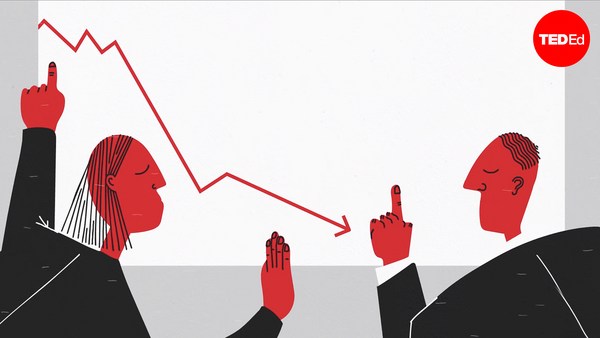How much would you pay for a bouquet of tulips? A few dollars? A hundred dollars? How about a million dollars? Probably not. Well, how much would you pay for this house, or partial ownership of a website that sells pet supplies? At different points in time, tulips, real estate and stock in pets.com have all sold for much more than they were worth. In each instance, the price rose and rose and then abruptly plummeted. Economists call this a bubble. So what is exactly is going on with a bubble? Well, let's start with the tulips to get a better idea. The 17th century saw the Netherlands enter the Dutch golden age. By the 1630s, Amsterdam was an important port and commercial center. Dutch ships imported spices from Asia in huge quantities to earn profits in Europe. So Amsterdam was brimming with wealthy, skilled merchants and traders who displayed their prosperity by living in mansions surrounded by flower gardens. And there was one flower in particularly high demand: the tulip. The tulip was brought to Europe on trading vessels that sailed from the East. Because of this, it was considered an exotic flower that was also difficult to grow, since it could take years for a single tulip to bloom. During the 1630s, an outbreak of tulip breaking virus made select flowers even more beautiful by lining petals with multicolor, flame-like streaks. A tulip like this was scarcer than a normal tulip and as a result, prices for these flowers started to rise, and with them, the tulip's popularity. It wasn't long before the tulip became a nationwide sensation and tulip mania was born. A mania occurs when there is an upward movement of price combined with a willingness to pay large sums of money for something valued much lower in intrinsic value. A recent example of this is the dot-com mania of the 1990s. Stocks in new, exciting websites were like the tulips of the 17th century. Everybody wanted some. The more people who wanted the tulip, the higher the price could go. At one point, a single tulip bulb sold for more than ten times the annual salary of a skilled craftsman. In the stock market, the price of stock is based on the supply and demand of investors. Stock prices tend to rise when it seems like a company will earn more in the future. Investors might then buy more of the stock, raising the prices even further due to an increased demand. This can result in a feedback loop where investors get caught up in the hype and ultimately drive prices far above intrinsic value, creating a bubble. All that is needed for a mania to end and for a bubble to burst is the collective realization that the price of the stock, or a tulip, far exceeds its worth. That's what happened with both manias. Suddenly the demand ended. Prices were pushed to staggering lows, and pop! The bubbles burst, and the market crashed. Today, scholars work long and hard trying to predict what causes a bubble and how to avoid them. Tulip mania is an effective illustration of the underlying principles at work in a bubble and can help us understand more recent examples like the real estate bubble of the late 2000s. The economy will continue to go through phases of booms and busts. So while we wait for the next mania to start, and the next bubble to burst, treat yourself to a bouquet of tulips and enjoy the fact that you didn't have to pay an arm and a leg for them.


